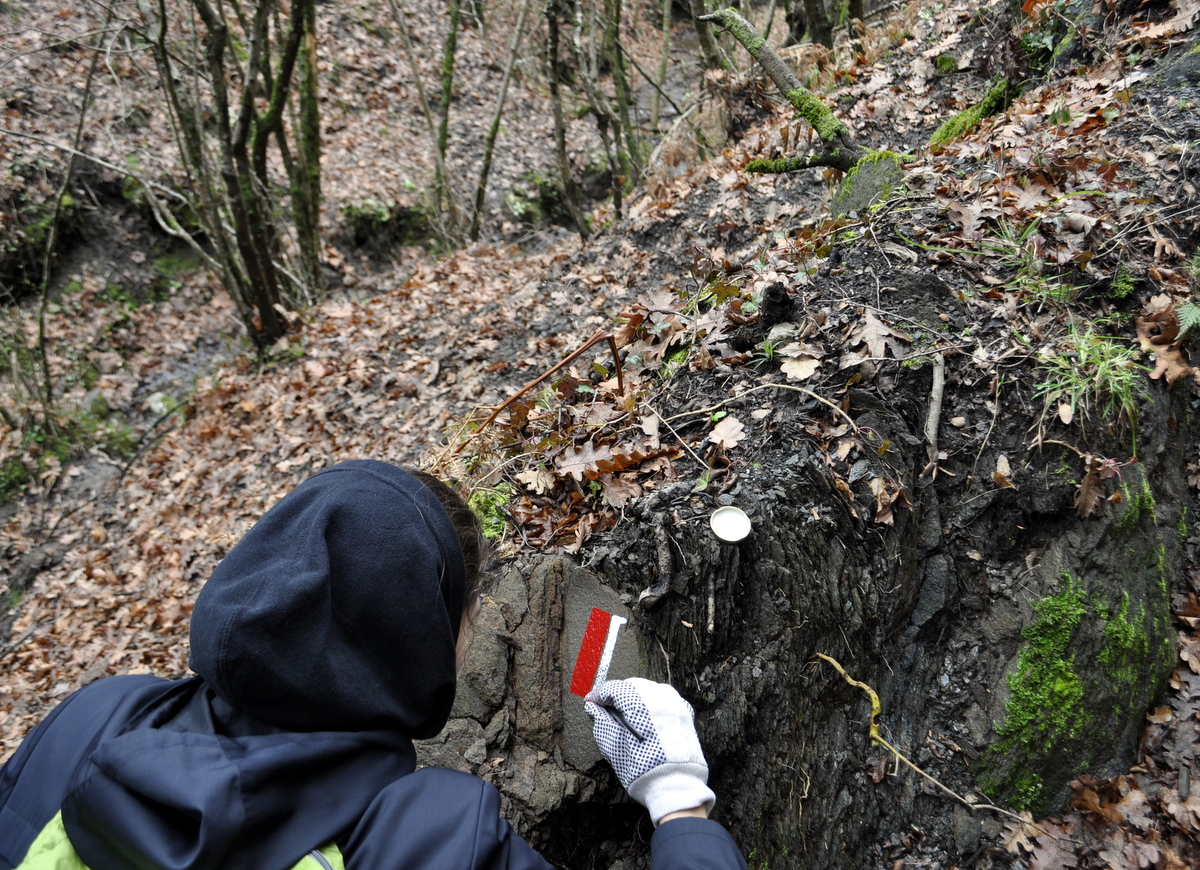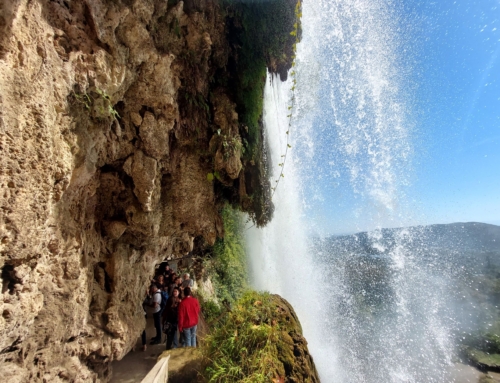
What is considered to be a good waymarking?
The answer is one: “Waymarks that a hiker can easily understand and seamlessly follow”.
In this article series we will attempt to present the thematic of trail signage with examples and pictures.
In this article we will speak about waymarking with paint or small signs, that only indicates direction.
 Waymarks are placed in such a way that they cannot be seen from hikers walking in opposite directions.
Waymarks are placed in such a way that they cannot be seen from hikers walking in opposite directions.
Waymarking aims at guiding hikers in a precise way, making them feel safe during the walk. Independently of the type of material that will be used, the way to put signs must follow some basic rules:
- Frequency
It needs to be installed as often as needed (for example, in places where the trail is not visible, you should be able to see at least one sign from another. On the other hand, when the trail is very visible and there are no junctions, the distance between signs can be up to 250 meters.
- Visibility
It needs to be installed in such a way so that the sign of one direction is not visible from those walking in the opposite direction (wherever this is possible) - Height
The signs should be installed at eye height (where possible), and in line with the hiker’s movement. - Contrast
Signs need to be composed of at least two colours, one lighter and one darker, so that contrast is created independently of the surface of application. - Shape
The arrow (if any) needs to be clearly pointing toward the trail. - Respect
Painting or sign installation must be performed with extra attention and care about the environment and culture.

One sign is visible from another.
Using one set of colours on a network of trails is also considered to be best practice as it helps hikers recognise the trail network.

Painting must be done with much care
Paths of Greece has an extensive experience in waymarking, and it uses a specific system for waymarking, presented here below:

The two lines are coloured in parallel to the trail line, so that they give a directional information. White always gets on the side of the trail.

Arrows indicate a change of direction and should be visible only from the direction that they concern.

The curve is coloured only on the ground, it follows the curvature of the trail and indicates a change in direction. It is visible from both directions on the trail. It is used only f there is no possibility to use an arrow.

The “Χ” indicates a wrong direction and it is a particularly important sign for absent-minded hikers!
Stay tuned to read about our next article on material used for waymarking!








